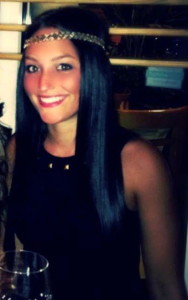Guest Blogger Beckah Porter ’16
 Having the opportunity to start a project from scratch can be exciting, but it can also be stressful especially when a client you are working with is unsure of their vision, making you unsure of how to start. For any scope of work there are some steps that be used as guidelines to reassure you, and the people that you are working with that tearing your hair out in frustration is not the correction solution.
Having the opportunity to start a project from scratch can be exciting, but it can also be stressful especially when a client you are working with is unsure of their vision, making you unsure of how to start. For any scope of work there are some steps that be used as guidelines to reassure you, and the people that you are working with that tearing your hair out in frustration is not the correction solution.
In my CUPID Studio class students work on different client projects that range from the different needs people on campus. Some projects needed to have materials updated, others had documents to use as a reference to create more detailed documents, but my client project was different. My client was a professor who managed the Multimedia Authoring minor. Unfortunately this interdisciplinary minor was not receiving the attention that it deserved, and the number of students enrolled in the program was dwindling. Our main objective for the client was to showcase the minor and persuade students to pursue the Multimedia Authoring minor. However, there was very little previous documents and information to pull from.
I was not alone in this pursuit, however. I had the pleasure of working with three other students. I have learned that when working with other students in a collaborative but professional setting, there must be a set purpose and goals for working together. Because there was only information about the minor on the school website to choose from, our group had to decide how to start our project. We asked ourselves questions such as, what would be the most beneficial way of getting the word out about Multimedia Authoring? What is the most effective form of communication? How can we showcase this minor so that people will be better informed?
After we had established answers to these questions we began to create a realistic timeline about when these projects would be completed. The key concept is the timeline is realistic. Being able to build the foundation for a client involves understanding the scope of work that is feasible in the allotted time frame. Although our group wanted to create many different documents and use many different mediums, this was not possible in the time frame that we had to accomplish this. Before my group became overwhelmed at the possibilities of all the different ways to approach this minor, we made a priority list. The list stated in order the projects that would be most beneficial to our client, which gave my group a direction to begin to pursue the project.
After the direction of my client project began taking shape, my group made sure to make pit stops along the way and ask our client if the direction we were taking the project was desired. Working with a client involves patience for room that your ideas for the first draft are never the last, and that is okay. When working with our client, the feedback that she was able to provide for us was vital because it directly related back to see if we were accomplishing the purpose and the goals, which we had set out to do. In my client project, we also learned that feedback from the client is important because the purpose and the goals can change, making the direction of the project change.
Working on a client project can be difficult at times, but in the end it is very rewarding to create the foundation for the project, which can continue to grow and develop over time. My group was able to accomplish many of the goals of the project while always keeping the purpose of broadcasting Multimedia Authoring in mind.

 Follow
Follow